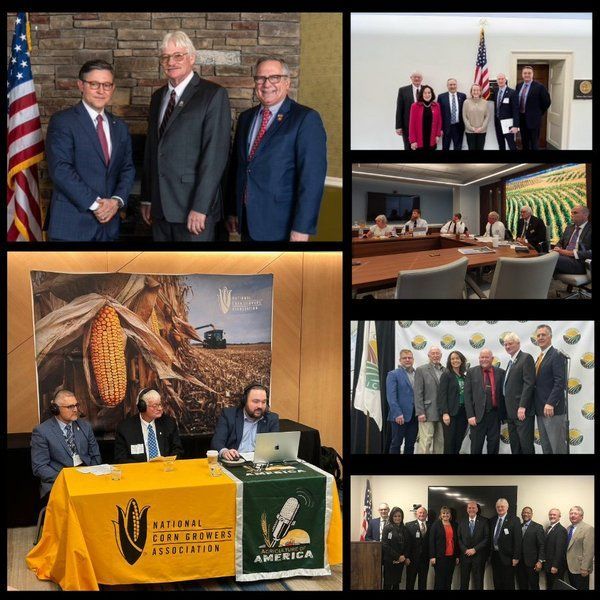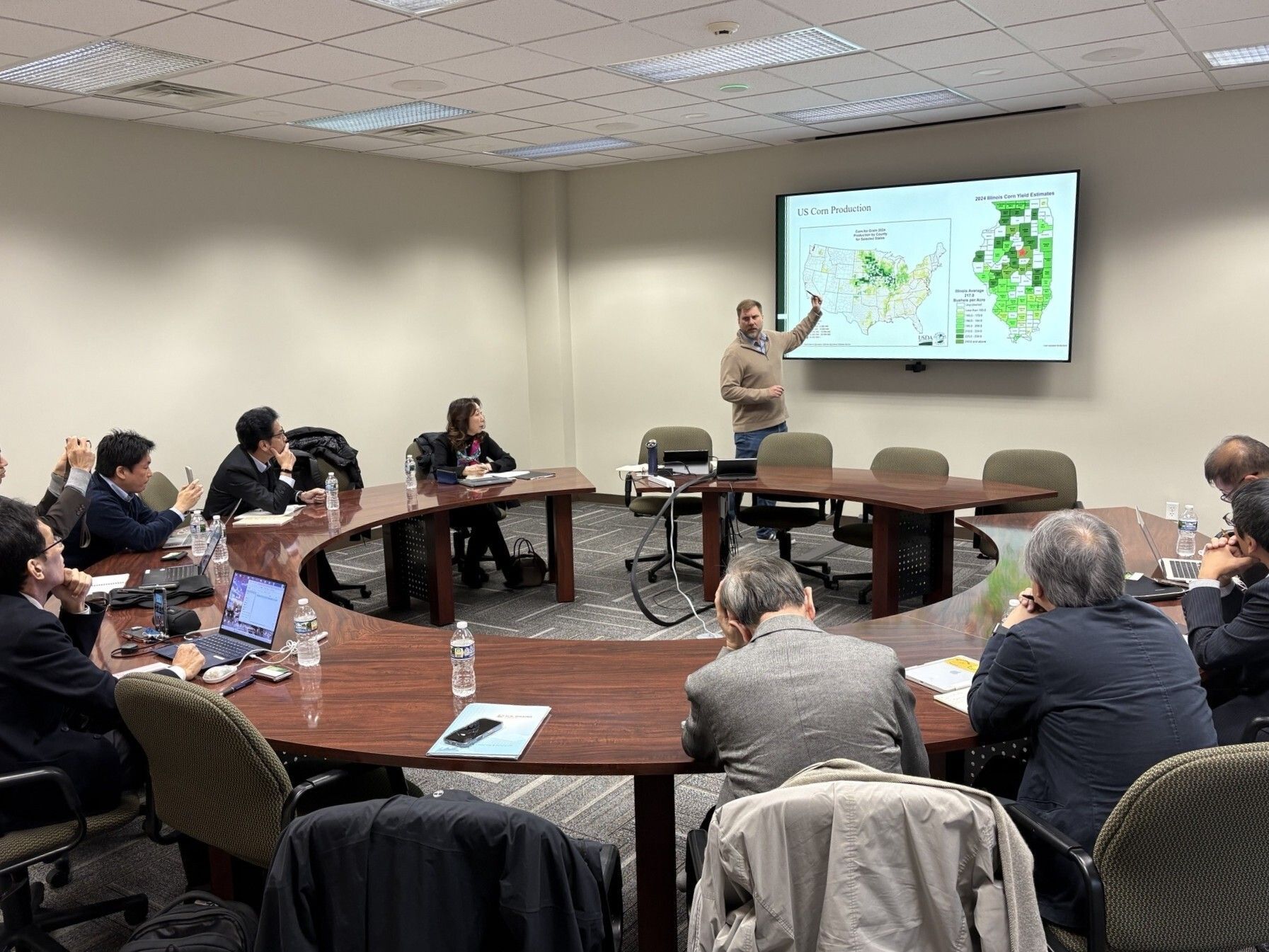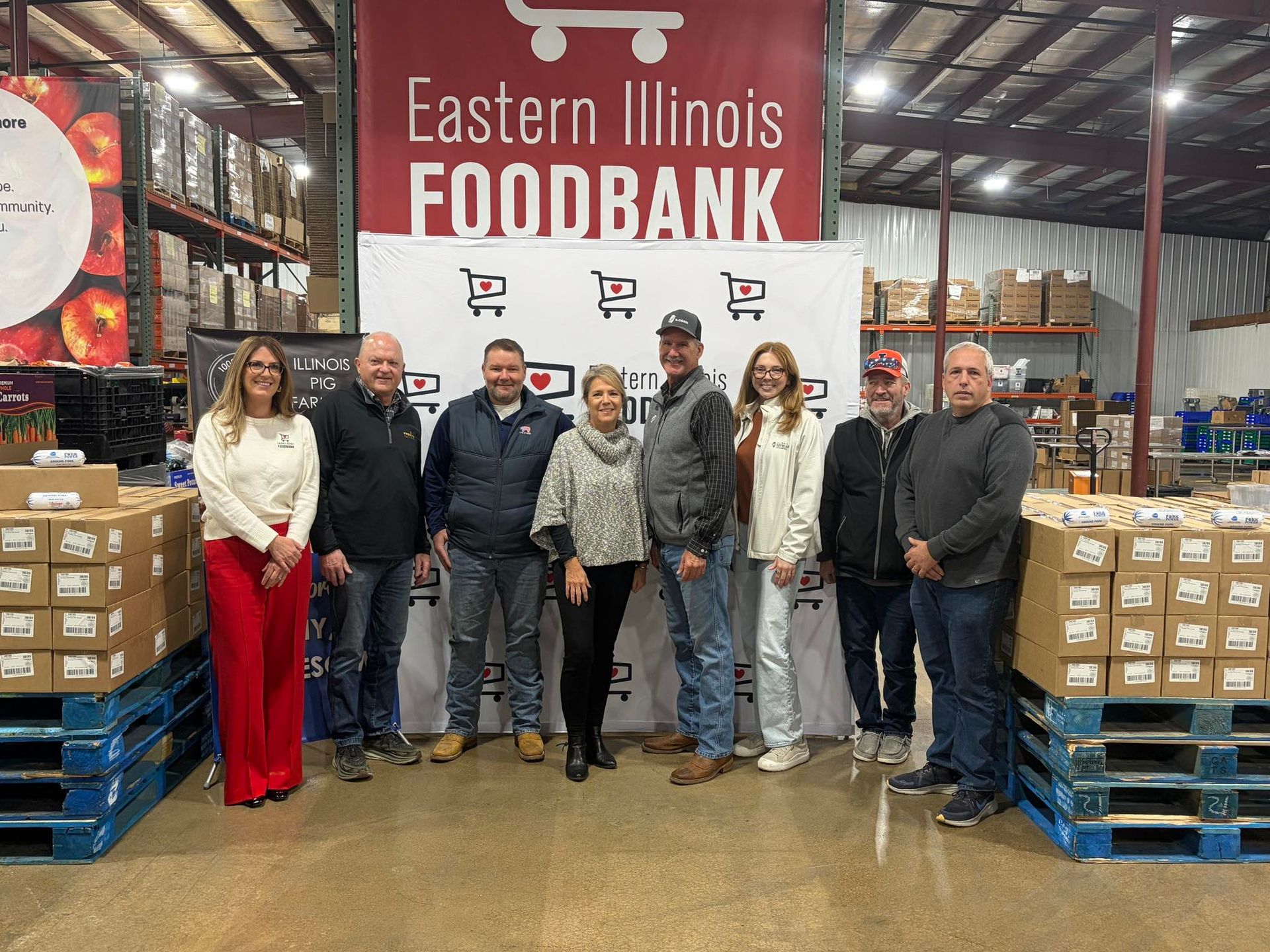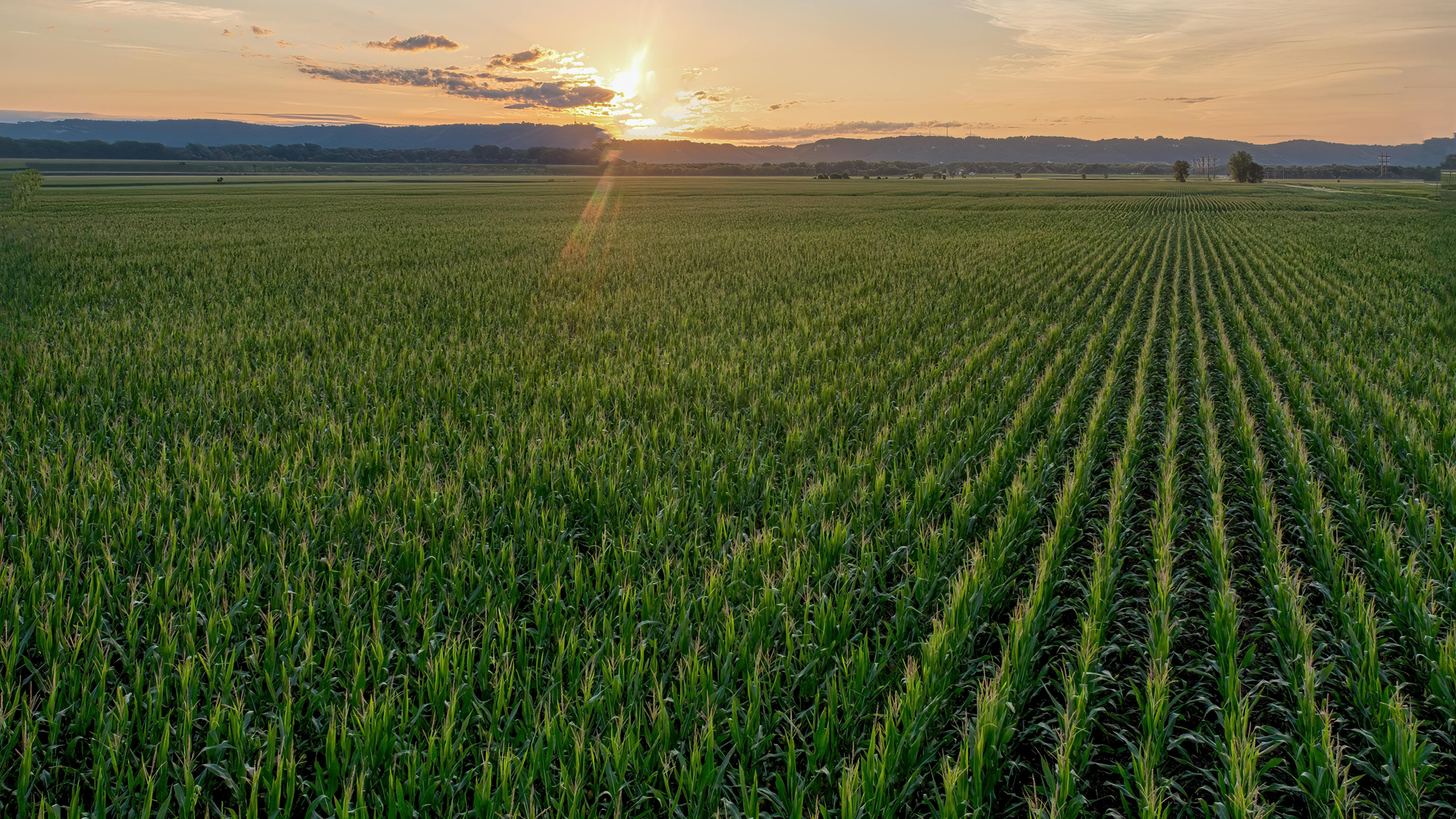50,000 Pounds of Pork Donated to Regional Foodbanks
As part of "Pork Power: Partnering to Fight Hunger in Illinois" campaign, one of the final ground pork donations of 2023 was made to the Midwest Food Bank.
Yesterday, Illinois Pork Producers Association (IPPA) board representative and pig farmer, Pat Bane, was joined by IL Corn Director, John Klemm, and staff members from the Illinois Pork Producers Association, the Illinois Soybean Association, the Illinois Association of Meat Processors, ISU Redbird Sports Properties, and Steidinger Foods at Midwest Foodbank in Normal, IL to make one of the final end-of-year donations.
"Illinois pork producers are not only a vital economic part of our state, but also a caring and giving part of our communities," says IPPA board representative, Pat Bane. "Pork Power is a wonderful program that gives much needed protein to the less fortunate. Since 2008, together with industry partners, we have provided over 3.3 million servings of healthy, nutritious, pork to those in need."
Says Matt Moran, general manager of ISU Redbird Sports Properties, "We’d like to thank the Illinois Pork Producers Association for their support of Illinois State Athletics and the Bloomington Normal Community through the Pork Power Campaign. Working together to find a creative way to give back to the community not only brought additional excitement to our football games but will help provide much needed protein to our community."
In 2023, along with industry partners, the Illinois Pork Producers Association (IPPA) has donated roughly 50,000 pounds of ground pork to 9 regional food banks.
"Seeing the Illinois Pork Producers generously donating pork to local food banks is a testament to the heart of the Illinois ag community. It's not just about feeding the world but ensuring that those in our own backyard have access to nutritious meals. This act of kindness embodies the spirit of unity and support that defines our industry, showing that together, we can make a significant impact on hunger relief efforts," said Todd Main, Director of Market Development at the Illinois Soybean Association.
“I know how important it is to make an impact in local communities all over our state. This program is so important to me personally and to IL Corn because we realize the impact, we are having by providing protein for hungry families all over Illinois. This is literally a program that allows 96% of family farmers in Illinois to feed the families that are their friends and neighbors,” said John Klemm, IL Corn Director and farmer from Waynesville. “I’m also grateful for the partnership at play here because our dollars go further when we all work together towards a common goal.”
Towards the end of each calendar year, IPPA turns the remaining funds into ground pork and divides it among the regional food banks in the state. Steidinger Foods delivered 6,000 lbs. of ground pork to the Midwest Food Bank, and another 600 pounds was added to the donation from the ISU Redbirds "Points for Protein" campaign. Each time the ISU Redbirds scored a home touchdown, 20 pounds of pork was donated to the Midwest Food Bank, which distributes nearly $34 million worth of food to over 2,200 non-profits each month.
“I am impressed by the depth of caring and concern shown by this collaborative group of community partners fighting with us to battle food insecurity," says Aimee Beam, executive director of Midwest Food Bank. "Their pork donation represents 33,000 servings of nourishing, healthy protein for our hungry neighbors in need. We are grateful for such meaningful and impactful partnerships!”
Thank you to our generous sponsors:
- IL Corn Marketing Board
- Illinois Soybean Association
- The Illinois Association of Meat Processors
- Illinois State University Redbirds
IPPA encourages pig farmers to participate in the program by covering processing fees of their donated pigs. Farmers can go to ilpork.com to learn more about the donation process. This program would not be possible without the help of our commodity partners, local packers and processors across the state, and those who purchased a themed t-shirt that profited the program.
-###-
The Illinois Pork Producers Association (IPPA) represents more than 1,700 pork producers throughout Illinois and the Illinois pork industry, which contributes more than $1.8 billion and more than 10,500 jobs to the state’s economy. IPPA is comprised of county pork producer groups in approximately 20 counties throughout Illinois. IPPA is an affiliate of the National Pork Producers Council and the National Pork Board.











































































































